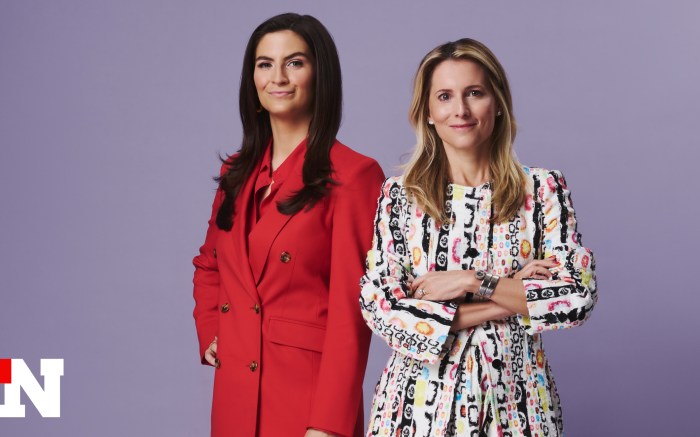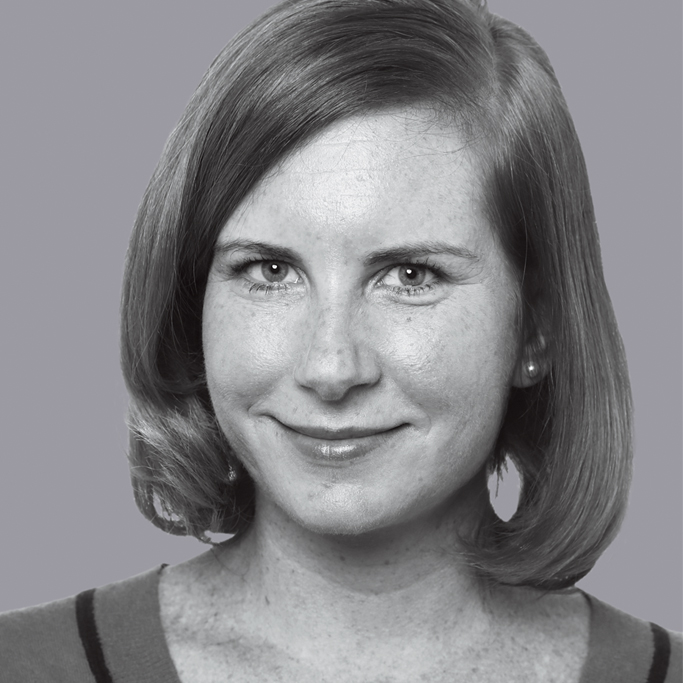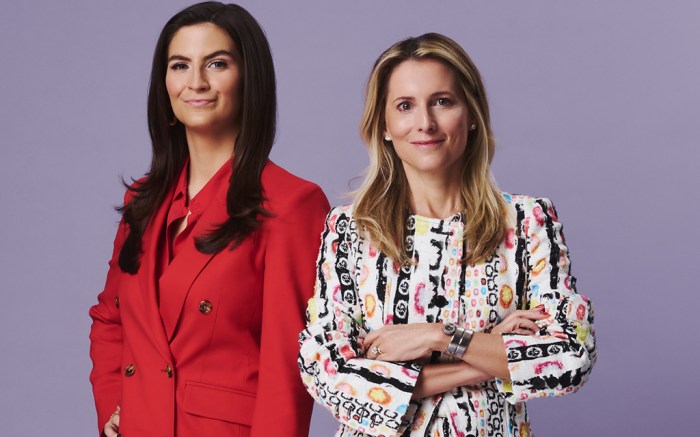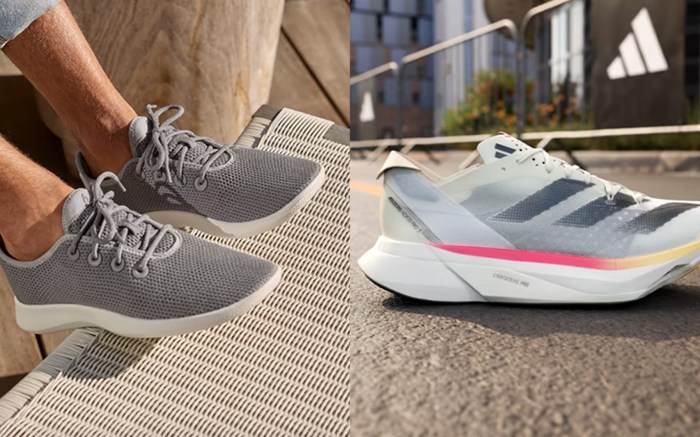Most weekdays in May, Kaitlan Collins was camped out in lower Manhattan, shuffling between the courtroom where former President Donald Trump was on trial and her anchor desk just outside. The CNN star was back on air every evening — analyzing the day’s developments with a panel of colleagues and pundits for primetime coverage.
During a few hours of downtime one Wednesday, the 32-year-old Collins, camera-ready in a striking red Argent suit, arrived at PMC Studios just after 10 a.m. The journalist — whose sleek on-air style (she’s known for her black turtlenecks and bright blazers) has inspired fan accounts on social media — was eager to dive into an FN photo shoot and go behind the scenes of a different kind of story: the rise of New York footwear company Larroudé.
Marina Larroudé, the label’s chief creative officer and cofounder, had admired Collins from afar for years, impressed with her interview style and ascent at CNN. Never one to shy away from making new connections, the entrepreneur decided to DM the journalist and invite her to an International Women’s Day lunch in March. “Kaitlan was the first one there,” the businesswoman recalled. They immediately hit it off. “I give my friends Larroudé shoes as gifts now,” said Collins.
In some ways, the two New Yorkers have had parallel journeys — their tipping points came during the height of the pandemic.
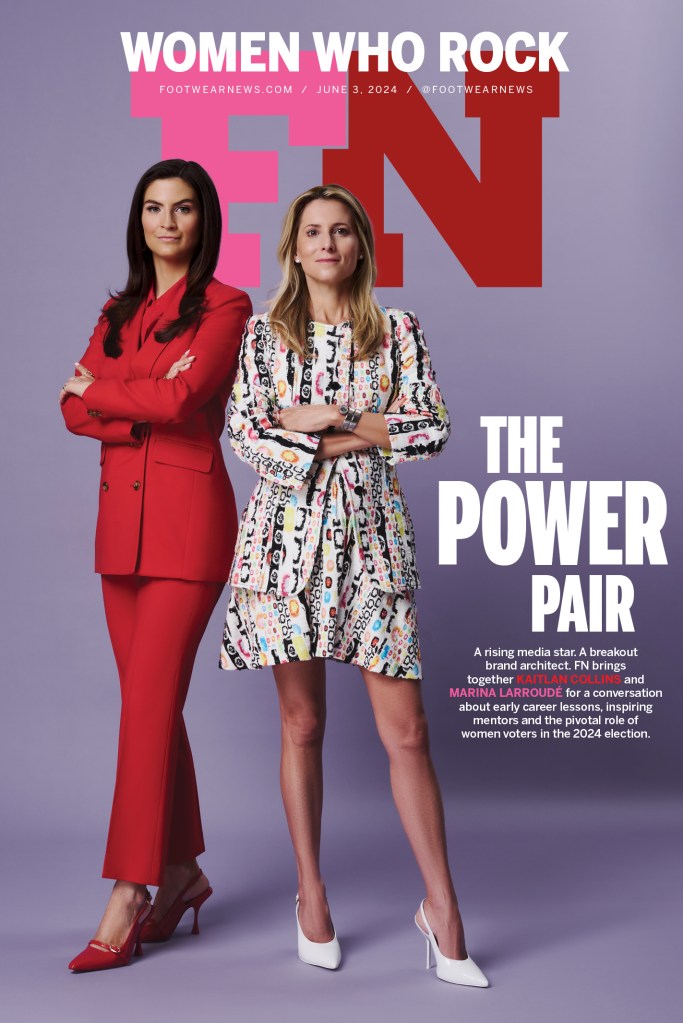
After making a name for herself during the Trump presidency, the fearless reporter was named chief White House correspondent at CNN in early 2021. Two years later, after a brief stint on the morning show, she was in the anchor chair hosting her own primetime show, “The Source With Kaitlan Collins.” But the Alabama native’s path was anything but certain.
“A lot of people don’t know exactly what they want to do when they’re 22. I always tell them, ‘I didn’t either.’ I never thought I’d be a White House correspondent or anchor,” said Collins, who got her start at The Daily Caller.
Larroudé also remembered her humble beginnings in the fashion industry, “cleaning out closets” at magazine jobs. After a career that took her from Style.com and Teen Vogue to Barneys New York, Larroudé started her business with husband Ricardo out of their Manhattan home in 2020, when she found herself unemployed and in the house each day with two young children. “The most frightening part was not knowing when things were going to change,” she said.
But during a time when many independent designers have been closing their businesses or scaling them back, Larroudé defied the odds and became a success, racking up $30 million in sales in 2023, less than three years in.
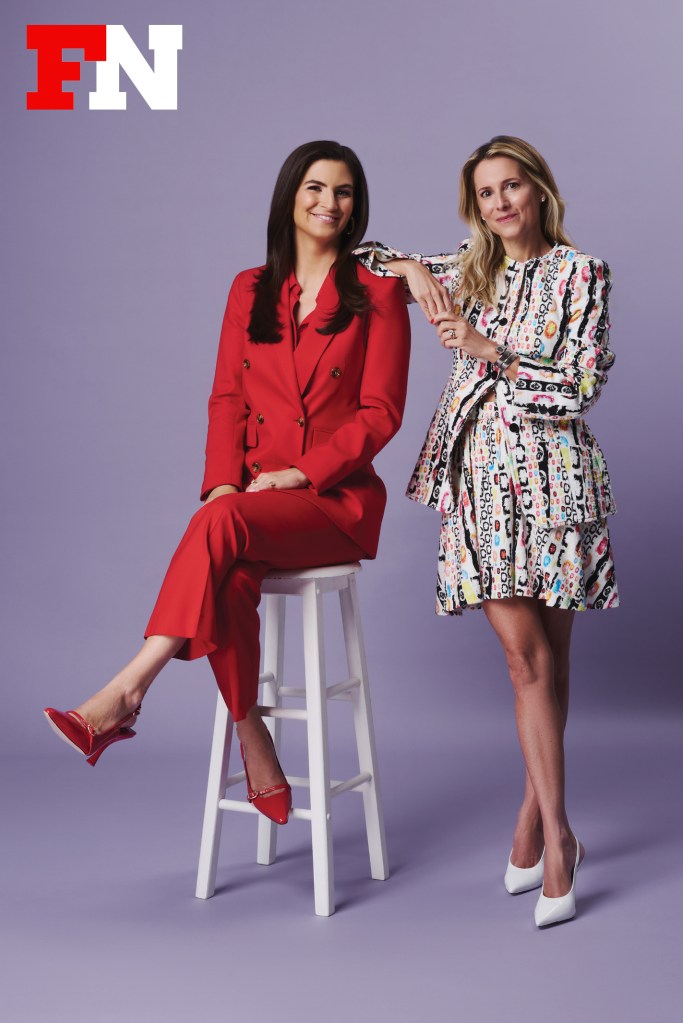
Meanwhile, Collins’ star continues to rise at CNN as the 2024 presidential election draws closer and the drama surrounding a Trump-Biden rematch ratchets up.
At a defining moment for both women, they sat down together to talk about how they got here, the inspiring women who came before them and why it’s important to make the most of every job.
The conversation has been edited and condensed for clarity.
Kaitlan Collins: “When I met you, what I was obsessed with was the story of how you started your brand and did so during such a challenging time, when so many of us were wrestling with this idea of what everyday life was looking like. You took that moment to strike out on your own.”
Marina Larroudé: “I lived through the 2008 crisis, and so when I was faced with the pandemic, I really looked at it and said, ‘This is the moment where I can do something for myself.’ I always had amazing dream jobs. But there was no plan B. I was home, unemployed, with two kids. And if it wasn’t during a time where all doors and windows were closed, I think I would have freelanced or reached out to my friends. It was all I could think about.”
KC: “That’s interesting. If you hadn’t had that set of circumstances, you might have just done something else.”
ML: “What I love the most is that both of our kids were very young at the time. The way they saw us and what it took to get the business [going], they saw it all. And for me, it was the biggest lesson that I could teach them.”
KC: “What is your advice for someone entering fashion? I think the industry can be daunting for a lot of people.”
ML: “It’s one of those industries where you have to work hard for many years. I recommend internships all throughout college. When you’re ready to hit the market, you have some experience. Be resourceful, reliable, available and make your boss’ life easier. You have to think ahead.”
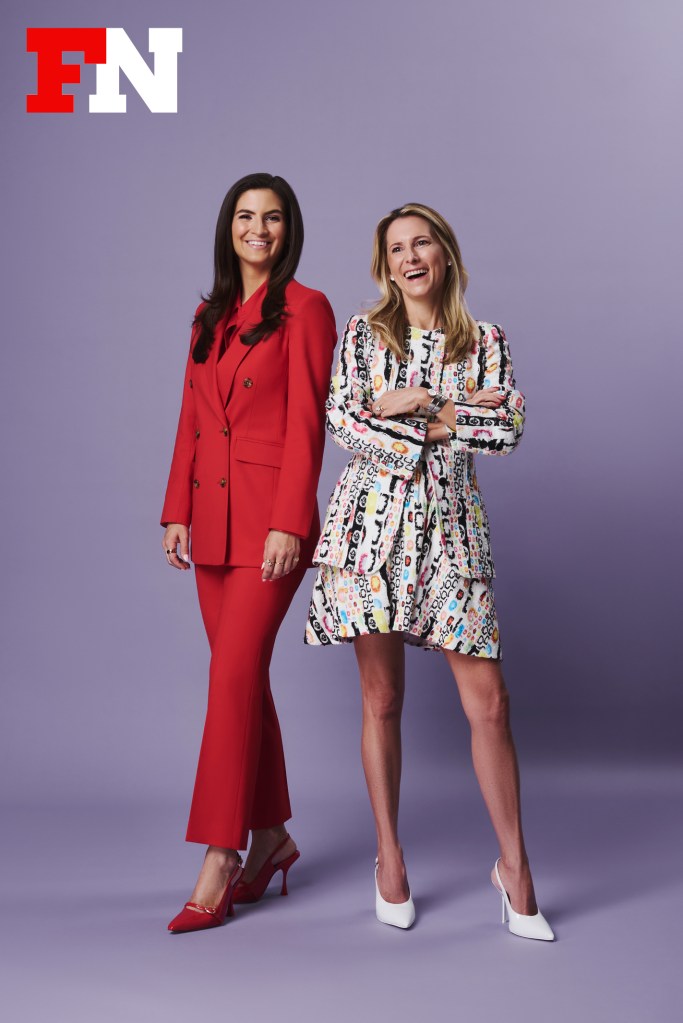
KC: “I do think being a happy warrior is a great skill to have when you’re young and you’re working. If you’re the one who says ‘yes’ when other people are saying ‘no’ … I’ve missed a lot of Friday night dinners or bachelorette [parties], things that I wanted to do, but it’s a cost-benefit analysis. What’s going to get you where you want to be?”
ML: “I didn’t go to my best friend’s engagement party. At the time, I was an intern at Vogue Brazil. I had a photo shoot in Rio, and I knew it was an amazing opportunity. It’s about your priorities and how you want to shape your career. How did you become a White House correspondent?”
KC: “Just being in D.C., politics is by osmosis. You’re surrounded by it. It was during the 2016 election, which gripped the whole nation. Everyone was watching, everyone cared about politics. It wasn’t just for a certain group of nerdy people in Washington. But I always say that no matter what job you’re in or what industry you’re in, just take a job. Start somewhere. Your first job isn’t going to define you. You can learn something from any business that you’re in. I worked on a golf course in high school, and just interacting with these people who I had nothing in common with because I had never played a sport, it helped me and informed how I talk to people now — which is such a big part of my job. Even if you’re not in your dream job, it’s helpful for whenever you get there.”
ML: “I think it’s silly to think that you leave college and all of a sudden you’re going to get your dream job. I worked in retail, I worked as a fashion assistant cleaning out closets. I was an editor, I was in wholesale, I went to Barneys … so many things. Today, I do my own PR for the company. You need to get your hands dirty. I get some interns who tell me, ‘I don’t like this,’ and I’m like, you started three days ago. There are so many parts of the job you aren’t going to like. It takes a lot of hard work.”
KC: “I also think you can learn just as much from something you don’t like as something you do. A lot of how I conduct myself in interviews — or my style with my team — is things that I’ve learned from watching other people, sometimes good and sometimes bad. But you can draw from those experiences to make you better.”
ML: “Who have you learned from along the way?”
KC: “I’ve always been a big reader,
and I love reading people’s biographies, from politicians to women journalists. I’m inspired by people who broke the mold and made it easier. I am reading a book on Barbara Walters right now. When she started, she had a male co-host who had to ask the first three questions in the interview before she could ask a question. Those things were real. It was in the contract.
Now it’s much easier to be a
woman reporter. I have been in the [White House] briefing room when it was a lot of men in the front two rows. They announce the new White House correspondents when there’s a new administration. I became chief White House correspondent at CNN when President Biden took office. It was so
cool to see the front row of that
iconic room be all women. It was a
really special thing.”
ML: “It’s true, we’re in a much better reality today. But there are still meetings when Ricardo and I are in the same room, and usually a guy is asking the question. If I start talking, they interrupt me and ask Ricardo to answer. I just don’t say a word. But then when I walk out, I’m like, ‘OK, I can’t be in this conversation again.’”
ML: “How do you think women in this country are feeling as the 2024 election approaches?”
KC: “We always try to predict what Election Day is going to look like. We like to learn and hear from voters, and see what people are thinking and how they’re feeling. And it changes, people’s priorities change. But what has been so fascinating over the last few years is how abortion and the fight over that has driven women voters in ways that we have not seen. Because of Roe v. Wade being overturned, women voters — regardless of what state they live in or how they typically vote or the demographics — are energized in a way we haven’t really seen, in Ohio and Michigan and all these different states. So that’s something I’m watching as we approach this presidential election, seeing women use their voice at the ballot box.”
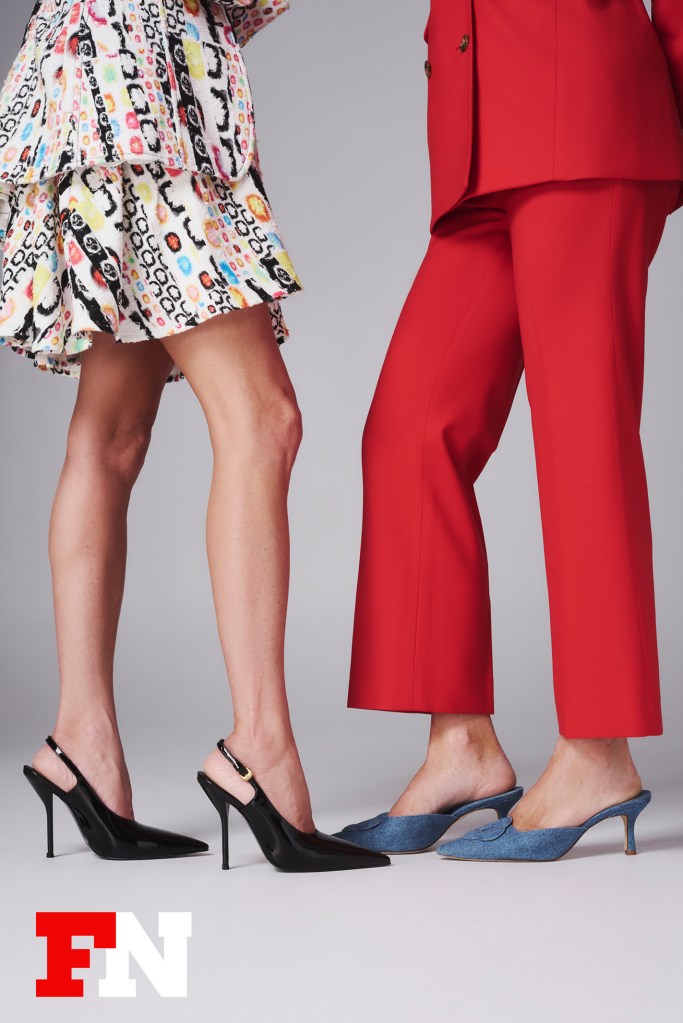
ML: “Is it multigenerational?”
KC: “Young women — when you look at the numbers — are in favor of having access to reproductive rights. But so are, typically, their moms and their grandmothers. Roe v. Wade was decided in the 1970s. Women don’t like the idea of it shifting backward or backsliding. It’s been a real motivating factor. And it is something that has been unifying across parties and ages.”
ML: “You talked about Barbara Walters. Who are some of the other women you admired when you were growing up?”
KC: “I still love going back and watching her interviews now. I’m always interested in someone’s interview style — how they are asking questions. There’s always a lot of thought and preparation that goes into it. Different people have different styles. I always watched Katie Couric growing up. She has this great story about wanting to be taken seriously when she was covering the Pentagon before she went to the ‘Today’ show. I am always interested in backstories and how [women] got to where they are, how they became successful, how they handled a certain situation.”
ML: “What advice do you have for the next generation of women journalists?”
KC: “I wish I’d known when I had gotten out of college to be more outspoken and to be myself. I think it’s easy to feel intimidated or to not challenge conventional wisdom. As a young woman, to speak up and to use your voice and to have a backbone, it’s not always natural. But I think it’s really a powerful tool.”
